#butterwort
Text
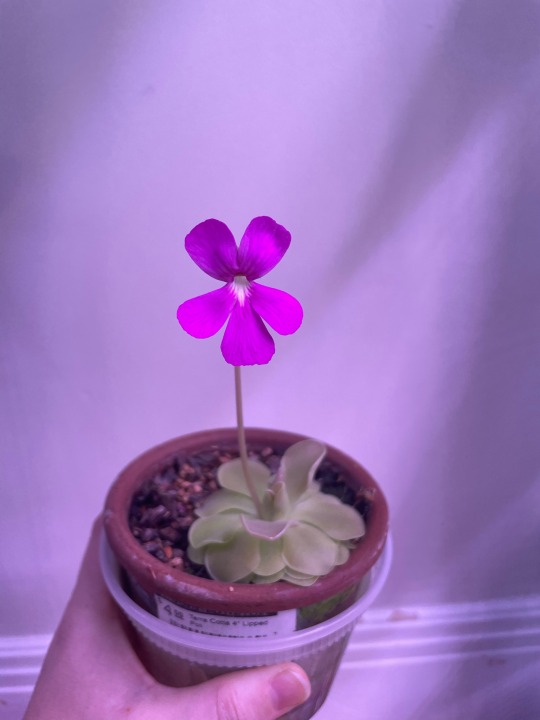
Update: Pinguicla moranensis flower opened! It’s way more saturated than my ‘Aphrodite’.
209 notes
·
View notes
Text


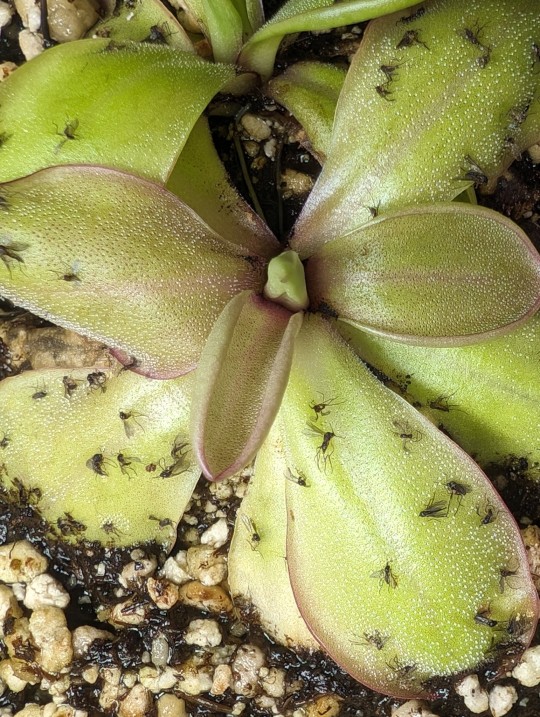
The one good thing about the infestation I had is how happy this butterwort is now.
#butterwort#tw dead bugs#plant photography#plant blog#plants#carnivorous plants#carnivorous plant#plantblr#plant#nature
59 notes
·
View notes
Text
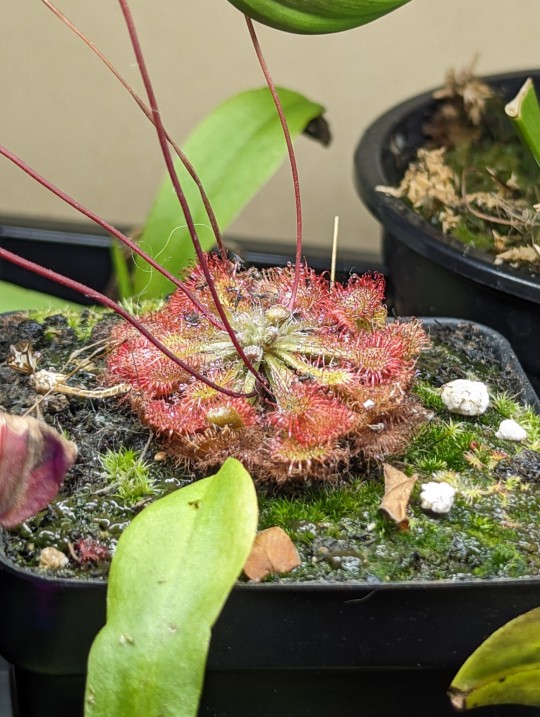

They're eating well!!! My pitchers are eating too, but you can't really see it the way you can with these guys 😁
Spoon leaf sundew
Common butterworts
#we had drain flies 🫣#they're mostly taken care of now and by God my carnivores were a massive help#house plants#plantblr#plants#carnivorous plants#spoon leaf sundew#sundew#butterwort#common butterwort#drosera#pinguicula
97 notes
·
View notes
Text


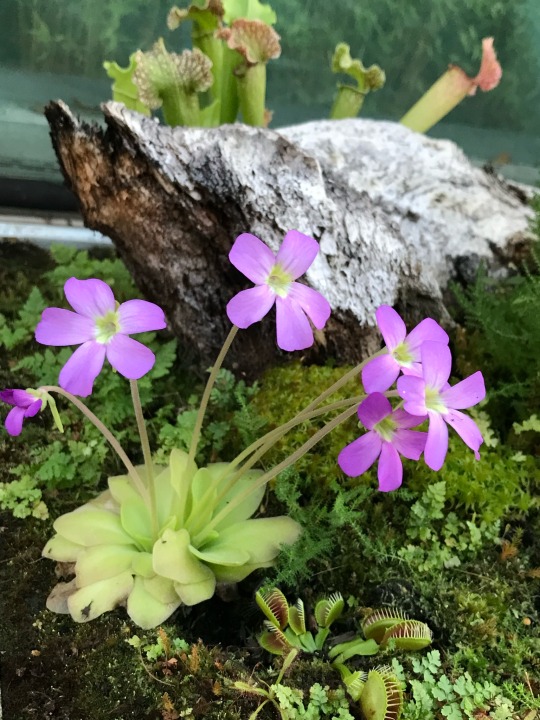


Plant of the Day
Friday 3 February 2023
This bench of carnivorous plants at Duthie Park was grown by the junior members of the Royal Horticultural Society of Aberdeen. These plants grown in acidic conditions and attract, trap and digest animals, mainly insects, for the nutrients they contain. The flowering plant is a Pinguicula species (butterwort) that is an insectivorous perennial producing rosettes of sticky, pale green leaves.
Jill Raggett
#pinguicula#butterwort#carnivorous plant#carnivorousplant#insectivorousplant#childrensgarden#plants#acidicsoil#writtledesign#horticulture#glasshouse#DuthiePark#aberdeen#DavidWelchWinterGarden#scotland
262 notes
·
View notes
Text

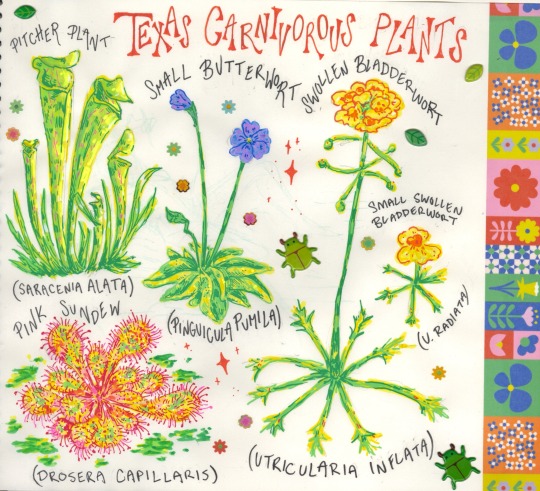
Sketchbook pages 4-5 🌼 1/26/24
#my art#sketchbook#sketch book#multimedia#illutrator#illustration#carnivorous plants#cicadas#bladderwort#sundew#pitcher plant#butterwort
12 notes
·
View notes
Text

It should be no surprise that when someone thinks about the dangers of the wild, most tend to focus on the animals. How could you not? With razor claws, huge fangs and a hunger for flesh, it's just like in all those horror stories or pulp novels! Though I argue that not every place is filled to bursting with bloodthirsty beasts, it is important to understand what species live in the environment you are visiting and which of them may be aggressive or territorial. But it isn't just animals that may pose a problem when delving into wild forests, jungles and other such biomes, as plants and fungi can be just as dangerous or even more! Stinging leaves, sharp thorns, infectious spores and so much more! Part of their danger is the fact that most people don't pay them any mind, and don't realize the threat until they step right in it. It's just a flower, what could it possibly do? Well, it depends on what species you are dealing with, ranging from "itchy skin rash" to "looks like we will have to amputate." Sound extreme? Believe me, I am not exaggerating here. There are tons of dangerous plants and fungi, and I don't just mean ones that are bad to eat. At least those ones you can avoid by not being an idiot and not shoving unknown specimens in your mouth. Just get a plant ID book and don't eat stuff you can't identify exactly. But back to my original point! What I was saying is that there are indeed flora and fungi that can ruin your trip to the woods and your life on this planet. The Manus Bloom is a very good example, as most people think it just some pretty flower or funky plant until they decide to admire it up close.
The Manus Bloom is an active plant that spends a good portion of its life unrooted. Their stalk is incredibly flexible and lets this plant move and coil like a snake. They do have roots at their very end, as they do grow from the ground as a seed. When they reach maturity, however, they uproot themselves and take on a more mobile life. The full grown ones can still bury their roots in the earth from time to time to absorb soil nutrients, or parasitically latch themselves to a much larger plant. At the other end is a impressive display of leaves, splayed wide in a hand-like arrangement. Their pink coloration causes people to think they are petals and that the whole structure is a flower, but the real bloom is not so obvious. When it is the season for flowering and pollination, a thin stalk emerges from the center of the leaves, tipped in a tiny flower. Here is where the pollen is produced, formed in sticky packets. Manus Blooms do have pollinators, typical bees and wasps, which is why the flower is positioned so far from the main body. It turns out, those leaves aren't just there to be pretty.
If you were crazy enough to get a closer look at these leaves, you would notice a vast amount of pores dotting their pink surface. The faint shine of liquid would reveal to you a glue-like substance that leaks from these openings. The hand-like arrangement of leaves are absolutely soaked with this adhesive, which is useful for catching food. Manus Blooms are carnivorous, using their colors and sticky fluid to trap insects and other small critters. It is why their flower is kept far away from their leaves, so that their pollinators don't fall for this trap. Other creatures will see it as just another plant, or be lured in by the sweet smell they give off. Some folk suggest that even the shine of the fluid may fool some prey into thinking there is water trapped in its open leaves. However they are lured in, they will soon find their doom if they make contact with the leaves. The fluid is a potent glue, and it gets prey stuck real fast. Most attempts to escape from its grip only causes them to get further coated in this mucilage, ensuring there is no escape.
To help speed up the process or snare prey that is too wary, the Manus Bloom will manipulate its own leaves like fingers, grabbing nearby prey or squeezing them in folded leaves to further coat them. The serpentine stalk lets them coil up and launch themselves at quick speeds, perfect for nabbing victims that refuse to get close. Once prey is caught, the secondary effect of the mucilage will reveal itself. The fluid isn't just a glue, but a digestive enzyme, and a potent one at that. It will begin to eat through prey like acid, melting them down so that their nutrients can be absorbed by the leaves. Hopefully prey suffocate themselves on the glue before this kicks in, because I imagine it is a pretty painful way to go. When prey is reduced to a fully digested goop, it will wipe its leaves off on a nearby tree or the ground to dislodge the bits it can't absorb.
Manus Blooms are ambush hunters, though they don't do much to actually hide. They tend to latch themselves to trees and other tall vegetation, so that they are exposed to passing prey and are easier to see. When positioned, they remain perfectly still, acting like any other rooted plant. This way, their small prey can spot them and move in for a closer look. However, it turns out that the Manus Bloom doesn't just eat bugs and tree mice, as they are more than happy to grab hold of a meatier meal. When positioned at the right height in the forest, their sticky hands can grab hold of passing beasts. Larger animals may not notice them as they travel, and may accidentally bump into one as they navigate the sea of vegetation. The mucilage lets them to stick to hair and hide, and the Manus Bloom lets go of its perch to hitch a ride. It will secrete even more glue to cement itself to the flesh and it will begin to digest.
At some point, the beast must notice the burning sensation in their side, and realize this thing is literally eating a hole into them. Some may try to shake them loose, but the glue makes their grip unbreakable. Their only hope is to violently rub the parasitic Manus Bloom against a nearby tree or rock, as that can damage the plant enough that it bails. They can take a surprising amount of punishment, but eventually they will call it quits if they are beat around enough. They will break their hold and drop off the animal, but this tends to remove a hefty layer of skin and digested flesh with it. Even with the plant dislodged, the left behind glue will continue to burn away for a good while after. If you ever see a beast in the woods with a horrible burned hole in their side, know that they had a run in with a Manus Bloom.
So these plants are capable of latching onto larger creatures and burning away their flesh with acidic glue. Sound horrifying? Well, we aren't done yet, as the Manus Bloom isn't always a patient hunter. With their snake-like movements and coils, they can actually choose to attack nearby creatures, launching themselves at food that is just close enough. So even if you don't physically touch one, they may decide to close the gap. This is why I said getting a closer look at one is a bad idea, as even being near them means a chance they may spring forward like a viper and grab hold. Some may dangle from branches and drop down on prey, or they may use their hand-like leaves to take a swing! Another, less elegant, name for the Manus Bloom is "Slapper," as they can whip their bodies around and slap that sticky hand onto anything within reach. And once they are on, it is almost impossible to avoid getting burned. Don't even bother trying to pull them off, it won't work. Even if you had the strength of troll, you would just rip the plant to pieces and still have them glued to your body. Instead, you need to find a knife or properly sharp object and start carving it off, doing your best to slip the blade between the plant and your skin. I will warn you, it isn't easy! Slicing it up and peeling it off is your best bet, but accept the fact that you are going to lose skin doing it. Minor burns and cuts are acceptable, when compared to having an entire chunk of your limb or body being melted off. Waiting for it to finish and drop off on its own isn't an option, unless you want to lose some weight real fast and real messily.
I hope I painted a nasty enough picture when describing these things, because Manus Blooms are real bad customers for those who travel the wilds. People who are forging a path and not paying attention will bump into one and have it latch on, resulting in a frantic struggle to get it off. I have heard of folk who have lost arms and legs to these plants, having it eat enough flesh off that an infection later sets in and the limb has to be amputated. There are even some tales of those who decided to admire it or perhaps leaned in to smell some of that sweet aroma. Having one of those latch on to your face? Yeesh, I don't even want to imagine that. Maybe the best option there is to find the fastest and most painless way to die before you get the sensation of that glue eating through your face and eyes.
Obviously, locals despise these plants and destroy them whenever they find them. Even dryads aren't a fan, as they will happily latch onto anything that moves. Even if the glue doesn't fully eat our flesh like it would meat, it does cause a burning itchy sensation and the glue is capable of smothering us. The existence of the Manus Bloom makes it extremely important to wear protective gear when traveling into the unknown. Layers of clothing that covers you from head to toe helps a whole lot. If the Slapper gets a hold of your clothing instead of your flesh, then you can rip that sleeve off and cast away the horrid plant before it can cause any actual damage. Dryads have also been able to create a thinning fluid to help counteract the glue and acid, making it easier to scrub it free from your body and also lessening the burn of the enzyme. Even then, any encounter with a Manus Bloom is a panicked one, and I am glad to have never gotten one on me. Let this entry be a reminder that stopping to smell the roses should only be done when you are absolutely sure those are only roses....
Chlora Myron
Dryad Natural Historian
---------------------------------------------
"Manus Bloom AKA The Slapper"
Another entry to help represent the other kinds of carnivorous plants of the world! Pitcher plants and flytraps stand aside! Now is the time of the butterwort! FEAR THE SLAPPER!
30 notes
·
View notes
Photo

Butterworts by incidencematrix on Flickr.
This work is licensed under CC BY 2.0.
#pinguicula esseriana#Pinguicula moranensis#butterwort#ping#pings#butterworts#mexican butterwort#carnivorous plants#cultivated#landscape#foliage#green#flickr#curators on tumblr#creative commons#creativecommonsplants#plants#plant blog#plant photography
69 notes
·
View notes
Text
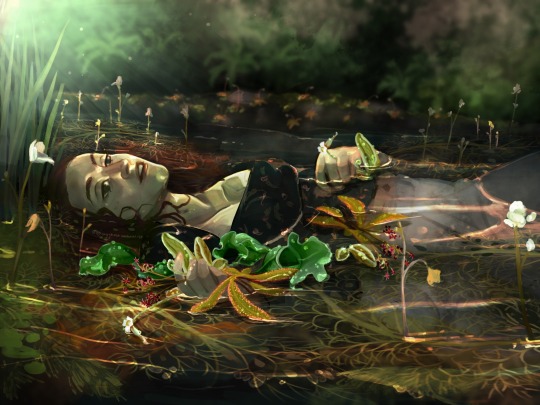

I’ve been thinking about the Ophelia / beautiful dead girl thing that is played over and over in a confusing way. I can’t really put it into words, something about there being layers to motifs and plants that are rarely pushed deeper than the immediate concept. I thought I’d try something different. These are all “carnivorous” plants, not truly ‘meat-eating’ more like catching vitamin supplements or making their own nutrient rich soil.
The first plant I wanted for this was Utricularia, the ‘bladderworts’ (bladder= sac, wort =plant), they’re under the surface. They have trigger hair bladders of varying size, some are just to catch zooplankton. They’re beautiful under the water but with just stems and flowers poking out above.
I picked the plants I chose carefully, but a lot of these notes I found after the fact. (and @crypto-botanist had perfect pictures and a very enviable username) like Drosera linearis, the sundew with red flowers. They reproduce asexually so energy sunk into flowers that don’t actually facilitate sexual reproduction is bananas! I used wiki to look through species lists and apparently Darwin said this: “…at the present moment, I care more about Drosera than the origin of all the species in the world.”
Sarracenia purpurea, the pitcher plant I chose (pics from crypto-botanist, again), is the only species that grows in cold climates. A wide distribution range is a huge advantage when ~97% of your genera’s habitat is gone. The weird thing, though, is that their seeds usually get only 5cm away from their parent plants. How did they get spread all over? We don’t know! They also have a microbiome in their pitcher fluid that helps them break down their … acquired nitrogen source. As I’m primarily a microbiologist, this makes me very happy.
The last is a butterwort, Pinguicula lusitanica, isn’t the most memorable carnivorous plant. It can be weedy for cultivators though it isn’t very genetically diverse to adapt to environmental change, still vulnerable despite temporary proliferation. Mostly this one represents one of the things I love about botanists, the love for the inconspicuous and seemly unremarkable. This popped up in the notes I found from pinguicula.org under the pictures took in the field with little personal notes and exclamation points. The ability to be obsessed with something no one else thinks about and just being excited that it exists. Scientists are very sentimental.
So I guess the flowers I chose here are analogous to Ophelia’s. Showy plants with more to offer if you manage to look (re plant blindness) and the way I’ve grown attached to this concept of poison ivy but actually as sentimental, passionate, angry and conflicted as we can be. Something like that.
#poison ivy but she’s an actual botanist#botany 2022#botany#drosera#utricularia#sarracenia#pinguicula#poison ivy art#poison ivy#poison ivy dc#pamela isley#carnivorous plants#pitcher plant#sundew#bladderwort#butterwort#character design#concept art#ophelia#illustration#artists on tumblr
178 notes
·
View notes
Text
I made a carnivorous plant texturepack for java
they can be found naturally growing in swamps (as texture variations for blue orchids)

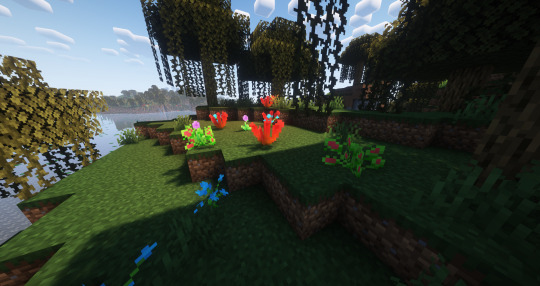


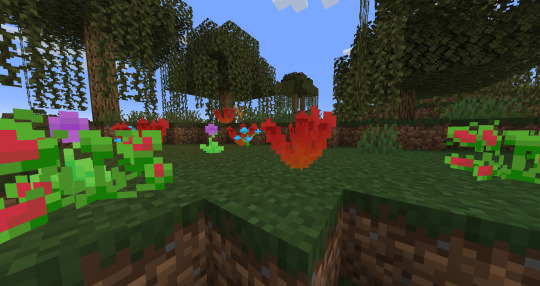
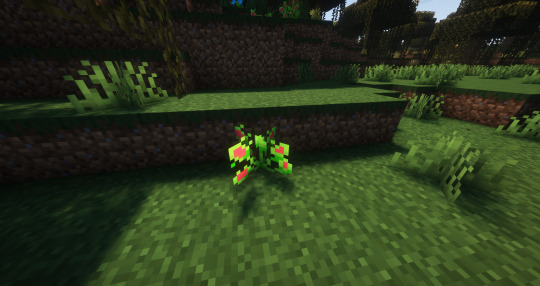
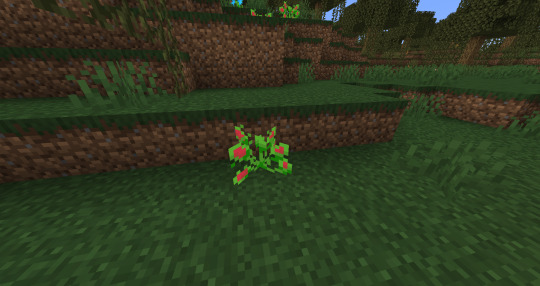
#leaf's posts#leaf's packs#minecraft#mineblr#minecraft texturepack#minecraft texture pack#minecraft resource pack#minecraft resourcepack#minecraft java#carnivorous plants#carnivorous plant#butterwort#pinguicula#pitcher plant#sarracenia#venus fly trap#venus flytrap#vft#dionaea muscipula
5 notes
·
View notes
Text


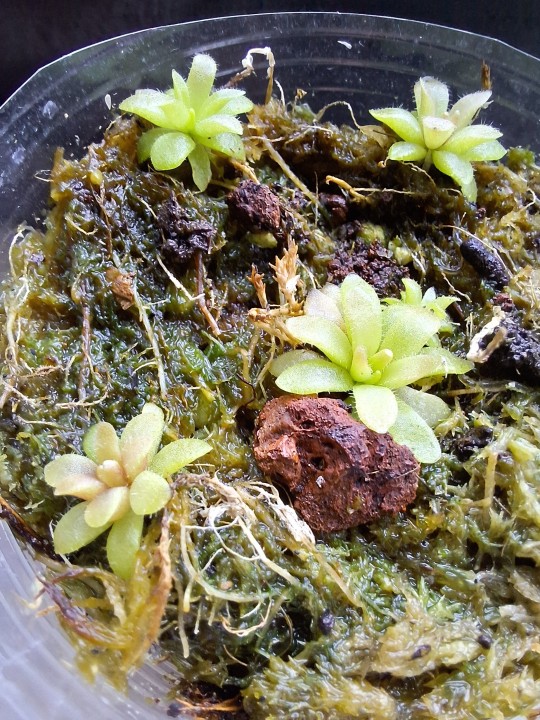
#aesthetic#alternative#indoor jungle#plants#green#botanical#urban jungle#carnivore#dark green#carnivourousplant#pinguicula#butterwort#carnivorous plants#plant aesthetic#plant art#plantas#brazil#portugal#jungle#europe#flowers#botanic garden#botany
7 notes
·
View notes
Text

It’s open! And extremely fuchsia.
(Pinguicula ehlersiae ‘Victoria’)
#carnivorous plants#plantblr#houseplants#flowers#pinguicula ehlersiae victoria#pinguicula#butterwort
80 notes
·
View notes
Text

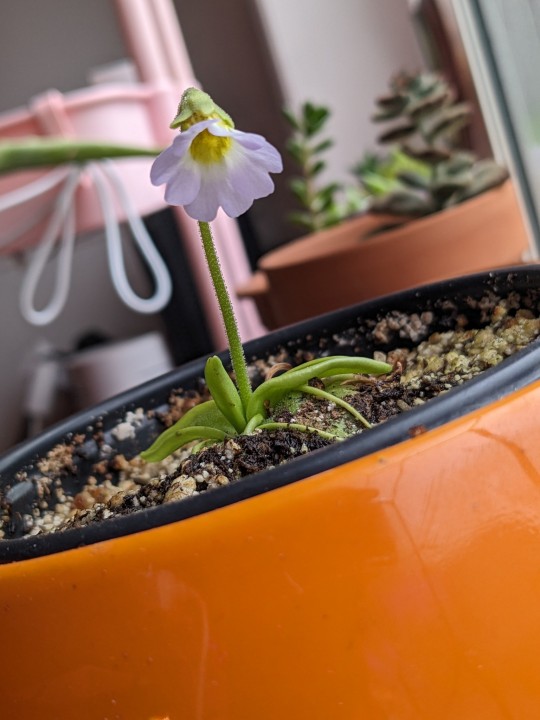
One of my new butterworts/pinguicula is blooming!

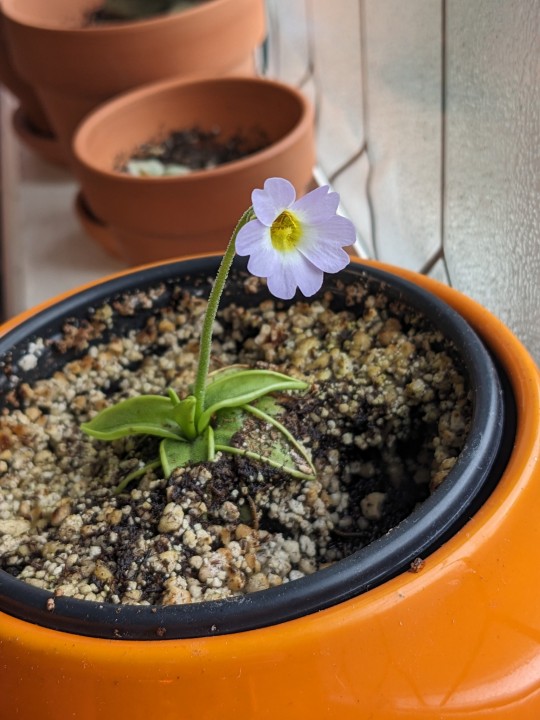
#butterwort#pinguicula#carnivorous plants#carnivorous plant#original photographers#cottagecore#fairycore#plant photography#plant blog#plants#flowers#garden#plant#windowsill
81 notes
·
View notes
Text



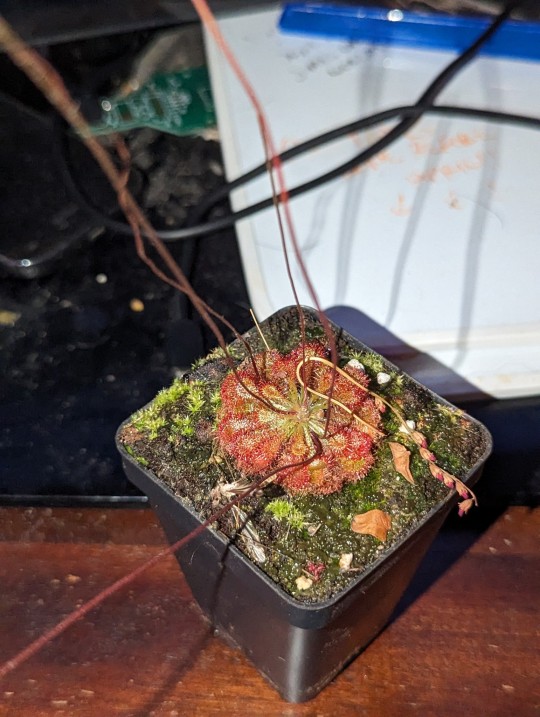
I thought my carnivorous plants would make a great first post!
Top left, purple pitcher
Top right, common butterwort
Bottom left, cape sundew
Bottom right, spoon leaf sundew
Carnivorous plants have always been one of my special interests. I'm just so fascinated by them! I've had Venus fly traps in the past, other pitchers. I actually have another pitcher, a velvet pitcher, but it's not doing so hot. I got it discounted, and I think the seller may have been feeding it tap water instead of distilled, and she wasn't thrilled about having the plant in her shop in the first place because she is vegan. So she ended up giving it to me at a discount because she wanted it out! I'm still trying to revive it, but I'm starting to get less hopeful about it.
#carnivorous plants#house plants#plantblr#plants#pitcher plant#purple pitcher plant#butterwort#tropical butterwort#common butterwort#sundew#cape sundew#spoon leaf sundew
22 notes
·
View notes
Text
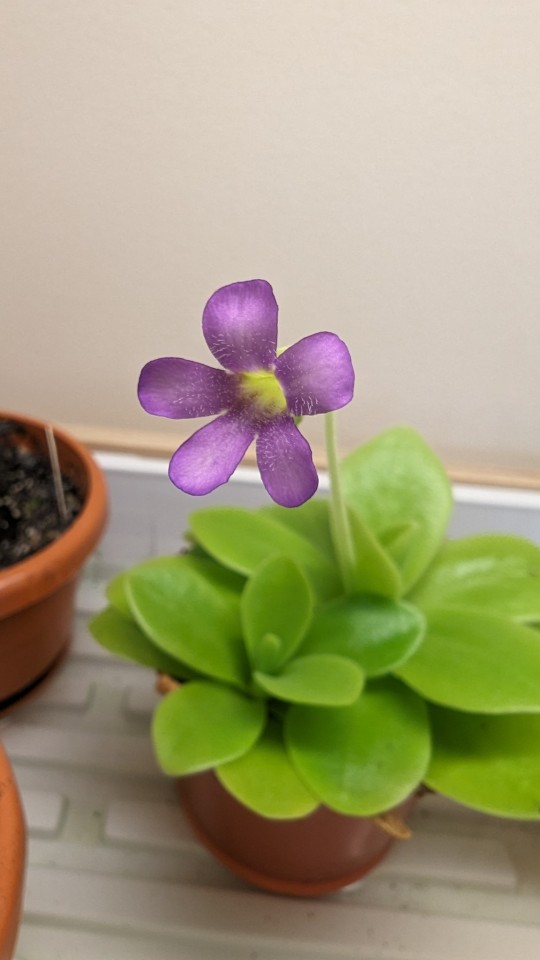



A bunch of my carnivorous plants are in bloom right now! Top left is my Pinguicula gigantea, top right is my Pinguicula aphrodite, bottom left is my Utricularia sandersonii, and bottom right is my Utricularia subulata! Most have been pushing out blooms since July, but this is the first time my P. gigantea has bloomed, I've neglected it several times the past 3 years I've had it, but it's a trooper.
6 notes
·
View notes
Text
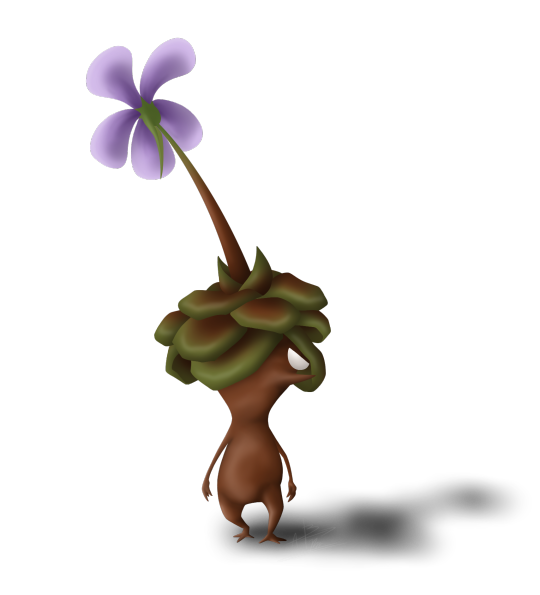
Butterwort
16 notes
·
View notes
Photo
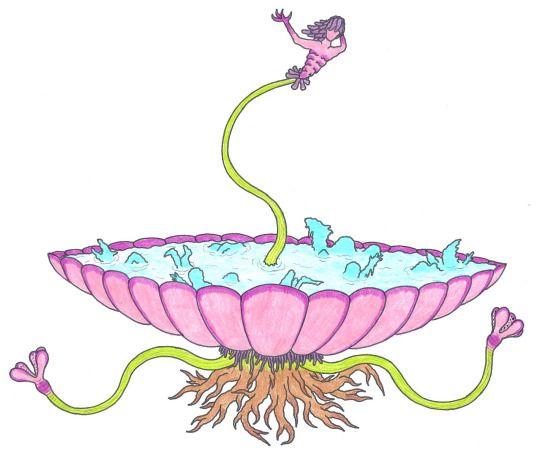
The desert is a cruel place, the dried bones scattered across the dunes is a testament to this. A blazing sun hanging high, blistering sands burning you from below. It seems there is no escape from the ceaseless heat. Many would avoid this wasteland like the plague, but fate is not kind to all of us. Sooner or later, a poor fool is cast into this scorching land and forced to walk its endless dunes. No shade, no water, no reprieve. The death march seems impossible to escape, as the sands stretch on forever in all directions. Even waiting til night grants the victim no mercy, as the blistering heat is replaced with a bitter cold. All day is spent wishing for the coolness of night, while the midnight hours are filled with prayers for the warmth to return. Regardless of the temperature, the one desire above all is water. The throat is as dry as the sand, and the lips crack and bleed. The body tries to desperately slog on in this wasteland, as the brain is fried in its own juices. Is there no escape from this horrible fate?
But wait! What lies beyond this sizzling dune? What does thy shriveled eyes spy? A fresh spring! An oasis! A massive pool of clear freshwater, just waiting for one to claim its great bounty! At last! Water! Salvation! Oh how it beckons to those poor desiccated souls on death's door! What was once a pained crawl through the desert becomes an ecstatic sprint, as they scramble to this paradise. Oh how it sparkles! How it glistens! And is that someone else enjoying this heavenly spring? A fair maiden swimming and playing in this crystalline lake? There is no time to pause, no time to hesitate. Thy fair lady desires company, and the waters look so refreshing! The dying souls rush to this spring and waste not a second before plunging into its blue depths. Oh how good this will feel, after so long baking in the heat!
The moment they make contact with the water, though, they will know something is wrong. At first, their worst fear was that this was just a mirage, an illusion dreamed up by a boiling brain. But there is indeed something there, some fluid they have dived into, but its not water. There is no cool relief in its embrace, no refreshing waves to wash away the sand and pain. No, it is sticky, thick and cloying. A disgusting warmth lies within, like snot fresh from a fevered patient. What they once ran to in joy they now struggle to escape, as the "waters" cling to them and drag them down. As they claw to the surface, they find no escape. The fluid covers every inch of them, and each attempt to wipe it away only globs on more. The mouth and nose are sealed shut, and their lungs cry out for air. They seek the shoreline, hoping to pull themselves out of this nightmare, but it is impossibly far. The liquid slows their movements and traps their limbs, turning them into a pathetic fly caught on sticky paper. As their air runs out and their brain begins to fade, they look desperately to the fair maiden in hope of salvation. The last thing they see is her true form, still dancing and swimming amongst a sea of melting corpses.
The desert is a cruel place indeed....
--------------------------------------------------------------
“Siren of the Desert”
Wanted to design a butterwort plant monster and was pondering ideas. One that mimicked a pool of water seemed like a good one, but for the size I wanted it to be, seemed impractical for an actual species. But then again, it seemed too fun to pass up, so here is the concept just blatantly applied.
Also, while I was coming up with this, I was like "someone mistaking a sticky pool of death for water? Why, it's like that scene from Land Before Time III!" which then of course was followed up by "wait, why do I remember that?"
36 notes
·
View notes